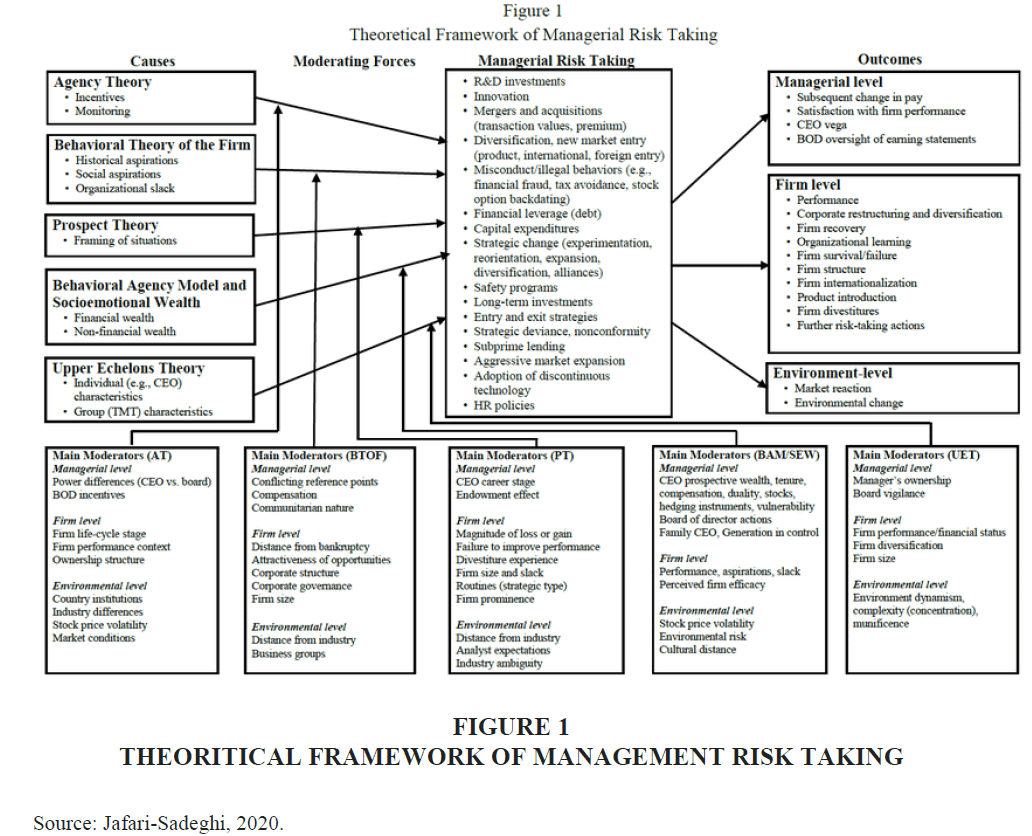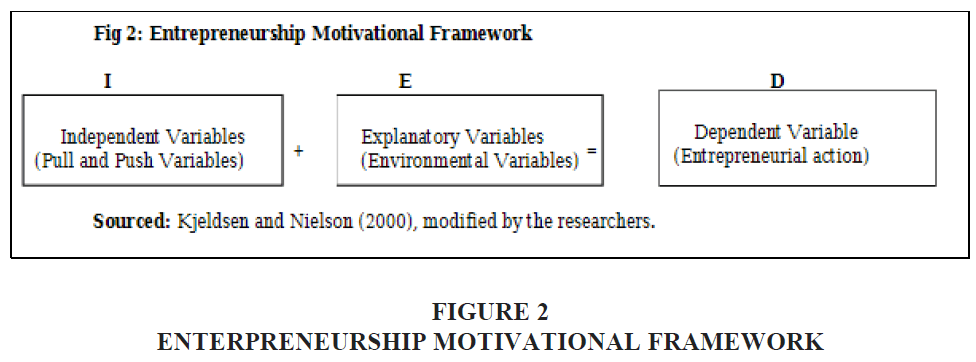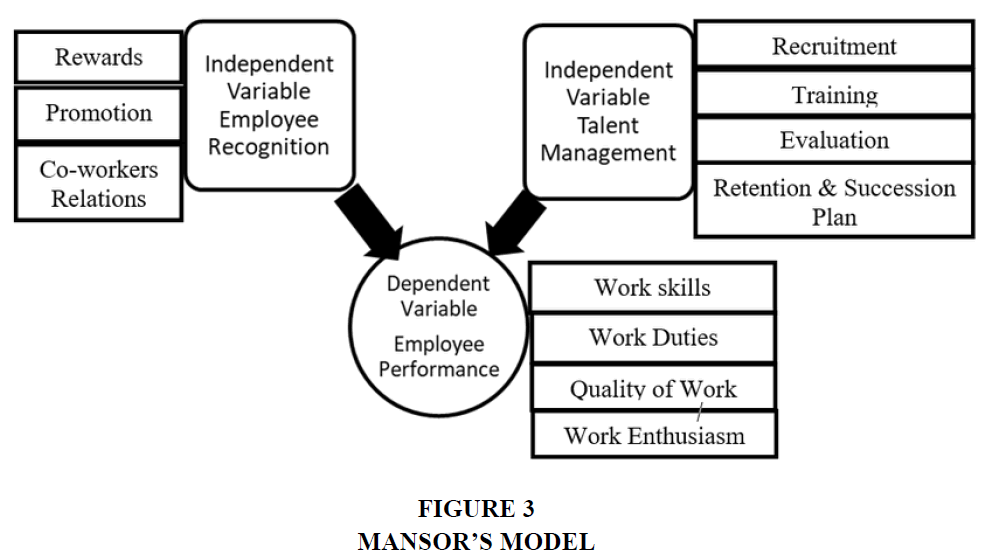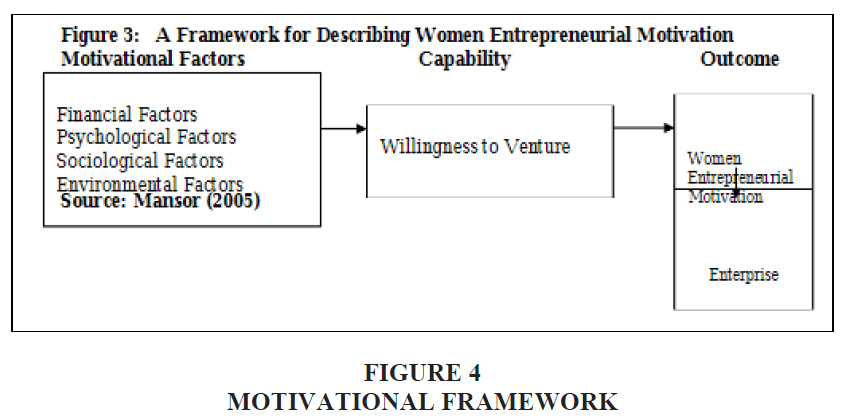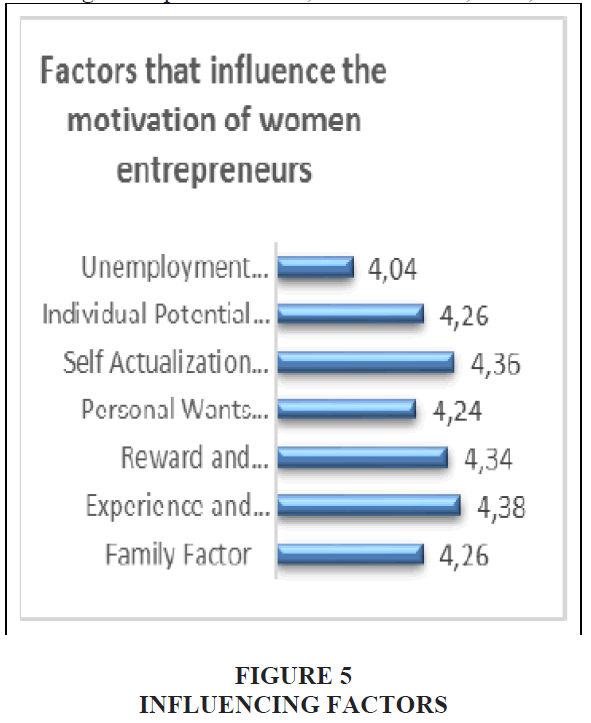Review Article: 2022 Vol: 26 Issue: 5S
Examining the Models based on the Motivation of Women Entrepreneurs
Prerna Katoch, Shri Mata Vaishno Devi University
Citation Information: Prerna, K. (2022). Examining the models based on the motivation of women entrepreneurs. Academy of Marketing Studies Journal, 26(S5),1-12.
Abstract
With steady development in various economic sectors women are becoming more self-sufficient and taking interest in business. In the last 50 years or so, technology has enabled people from different demographic and psychographic contexts, to apply their ideas to come up with a new venture. Although historically, women in the most communities were likely to be suppressed. However, things have changed drastically in the last century. Today, women from the vulnerable demography and community also get the opportunity to express their ideas and turn it into a venture. Although, in the remote parts of the world, the process of women entrepreneurship is a tough journey, it could not deprive women to take opportunity and shine through their talents. One of the biggest reasons for this is motivation. From wider secondary data available, most of the successful women entrepreneurs are highly motivated by some sorts of external forces. Although it is a wider discussed argument, there is a very short amount of actual researches conducted to identify the role of motivation and its implications in wider success. Therefore, this study it intended to fill this gap by delving deep into the connection between motivation and women entrepreneurship. The literature review has examined each factor that drastically changes the overall situation related to the women’s entrepreneurship model. The context of this research paper is thoroughly elaborated about women’s entrepreneurship in the modern era. The research paper also points out some theories in the literature review chapter and applications of those models for self-improvement. The theory has described different traits and motivates all women for better development and progression. The research paper examines different journals, research papers regarding this issue to collect secondary data and justify the objectives. The study further discusses external and internal forces which amplify various factors regarding the topic.
Keywords
Women Entrepreneurs, Motivation, Models, Motivational Framework.
Introduction
The dynamic changes of globalization rapidly change style of living in various ways. The advancement of science and technology opens various opportunities for people (Ng and Fu, 2018). High use of the internet in daily life brings enormous progress in every aspect of daily life. People are becoming more educated and motivated through social media and different web platforms. Entrepreneurship that is generally driven by men population is now also witnessed by women by challenging its complexity. Different research studies have confirmed that if more women participate in entrepreneurial intention, economic development and policy execution may be completely fulfilled. Women engaged in a wide array of business ventures around across 37 GEM nations, according to the Global Entrepreneurship Monitor (GEM) (2005), and such efforts have paid off in the shape of many new businesses that have created jobs and prosperity (Bhardwaj & Mittal, 2017). Even though women's initiative is an important progress trend and international affairs in most nations, scholarly study on their business ventures is limited. Over time, the proportion of women who are involved in entrepreneurship has continuously increased. Rural women entrepreneurs not only increase employment, but they also provide society with a variety of answers to organizational strategic difficulties, as well as diverse approaches to the exploitation of enterprising prospects. Human demands as customers present an unlimited chance for the corporate world to continue to experiment with new items or alternative means of reflecting economic to satisfy people's needs. Typically, women focused on their home lives but were content with the 3Ks: ‘Knitting, Kitchen, Kids, (Agarwal et al. 2018).' They were largely engaged in farming or, at the most, personal trade enterprises, aside from domestic tasks. New ventures nowadays represent a bunch of women who have ventured off the conventional path and are investigating new sources of growth. The purpose of this research is to evaluate hypotheses for identifying women's entrepreneurial drive based on available literature (Zhu et al. 2019). The research design models will provide an amount of experimental proof generated from current literature, which will lead to the application of reproduction logic in other areas, contextually (Llados-Masllorens & Ruiz-Dotras, 2021).
Objectives
There are several objectives regarding this context these are
1. Examine different theories based models to determine the motivation in women entrepreneurship.
2. To propose a new women entrepreneurship model for better progression of women entrepreneurship sector based on extensive literature review.
Literature Review
According to Egwuonwu and Iwunwanne (2020), the intentions of women entrepreneurs are scientifically linked to a variety of aspects. In today's world, the relevance of women’s entrepreneurship development has been thoroughly established in scholarly research and policy paperwork by many countries (Meyer and Hamilton, 2020). Psychological, economic, and environmental all have the potential to affect entrepreneurial activity. The Sociological Aspects figure looks at a person's personal history, family history, professional stage, young adulthood events, and growth surroundings. According to the findings of this research, most women enter in entrepreneurship in order to have more leisure for their families, and their businesses are usually built around this aspect. Several academics' contributions that seem to be relevant to the topic have been examined. It was determined that the motive (Isaga, 2019), attractiveness, and practicality of an entrepreneur are all linked. Entrepreneurial practice is vital for gaining talents and capability in business skills and abilities. This is due to the practice of providing a woman's basic information before acting in maximizing her organization, the individual has the potential to forecast the results gained for the activities taken in his industry without realizing it (Saleh et al. 2021). New ventures make up about 10% of the actual quantity of entrepreneurs in India, according to estimates, with the ratio increasing year after year. If the pattern continues, females will likely account for 20% of the entrepreneurial workforce within the upcoming five years (Solesvik et al. 2019) Figures 1-6.
Relative Model and Theories
In the wide array of this research topic Jafari-Sadeghi (2020), Bartol and Martins’ models are thoroughly described. This model examines different factors that have a strong impact on this. Three main factors mainly amplify the environment. Meyer (2019), researcher explained that personal characteristics are fundamental traits to be a successful entrepreneur. The main two variables are personal characteristics and background characteristics. Women started their enterprise by thinking of their establishment. Personal achievement thrives to achieve some new challenges for any human being. The women break the traditional way of living and face some new complexity by background characteristics. Background characteristics include childhood, parents’ support, education, age, work history, and environmental influences.
Life Path
Another key factor that affects women entrepreneurs is their life situations. Unsuitable work environments, bad migration, career transitions, and favorable pull influences are all factors that play a role in this aspect.
Environmental Support
These important aspects have to do with the optimal circumstances that are necessary to establish a firm. Appropriate financing, educated workers availability, vendor accessibility, management capacity (property, logistics, electricity, etc. motivating and implementation method network connectivity are some of the parameters that can be used to determine these factors.
Feasibility of Entrepreneurial Venture
These three key elements of this model are mainly motivating all dependent on female's capacity to seek and see their dreams realized in the shape of a new venture. The likelihood of a new initiative taking the form of innovation increases as the concentration of these characteristics increases motivation.
Kjeldsen and Nielson’s Model
This model actually for entrepreneurs explains how really several parameters may be applied to analyze innovation and entrepreneurship.
Kjeldsen and Nielson’s Model Elements
The pull/push component, as well as environmental conditions, are among these components. Job unhappiness, job loss, marriage, knowledge, and resource accessibility are examples of pull and push variables, whereas external factors include role models, government schemes for entrepreneurship growth, and family support. The inclusion of the pull and push elements can aid a lady's perception of business as desirable, leading her to do a feasibility analysis on the targeted company before deciding rather or not to pursue it. It is woefully insufficient to have driving variables present. Women's innovation is a result of their motivation and abilities. The investor must be eager to seize the opportunity offered to her within a certain context and turn her idea into a corporation. The pull and push factors can help a woman see business as attractive, enabling her to conduct a feasibility study on the acquiring company before deciding whether or not to pursue it. The presence of driving parameters is severely weak. Women's ability to innovate is a product of their drive and abilities. The entrepreneur must be enthusiastic to take advantage of the chance that has been presented to him.
Mansor’s Model
Economic, ecological, psychological, and societal elements, according to Mansor (2005)'s approach, can either support or prevent women from becoming entrepreneurs. Female achievement orientation is a combination of various variables (financial, sociological, psychological, and ecological) as well as a desire on their part to establish their own business. Financial reasons may include availability funds, tax financial incentives, the constraining consequences of red government red tape or regulations, failure to implement policies that help small businesses, a lack of prior economic skills, a desire for self in delivering financial projections, and so on (Mansor et al. 2020). The limited availability of venture money, the presence of experienced innovators, the availability of highly skilled labor, the accessibility of vendors, and the accessibility of clients are all external factors. Ability and proclivity to take risks in business, feelings of competence, need for accomplishment, innovativeness, and other psychological characteristics may all play a role. Family impact, role models, the specific role of women, and some other social issues are among them. The entrepreneur's ability to quickly and aptitude determine the result of the business. This is seen in the graphic below.
This theory-based model takes into account a number of factors that influence the start-up of a business. It takes into account the functions of monetary, psychological, political, social, and environmental elements, as well as a person's individual potential to motivate entrepreneurial activities. Girl's tendency to embrace risks in order to witness the development of an entrepreneurial initiative is critical. The presence of motivational variables is insufficient. Women's entrepreneurialism is a product of motivational aspects and skills. The investor needs willing to take benefit of the chance presented to her within a specific context and develop her concept and desire into a business. Mansor (2005), on the other hand, did not elaborate on the level to which these characteristics can impact women's propensity to engage in entrepreneurship, as well as other mediating elements that can prevent them from doing it again.
Effective Factors
The advancement of the worldwide web nowadays has resulted. Many online companies take advantage of the potential as a lucrative business possibility, like online marketing.
Entrepreneurial Women
An entrepreneur is a person who starts a new firm by incurring complexities in order to earn development revenues by spotting strong incentives and putting together the assets necessary to capitalize on those chances by Ughettoet et al. (2020), An young entrepreneur handles and considers the risk of a business and entrepreneur creates something that no one else has ever thought of. Every human possesses an entrepreneurial mindset, which entails being creative, having a clear goal, and striving for success in one’s life.There is two primary components to entrepreneurship. (1) Possibilities and (2) the capacity to take use of them. Based on the requirements for enterprising females, four forms of entrepreneurship have been defined.
1. Every human being is capable of pursuing entrepreneurial goals and consider gender roles in traditional ways. They are frequently referred to as "female employees" who are compelled to engage in business due to financial constraints (Santos et al. 2019).
2. By adhering to traditional gender stereotypes, business owners show little curiosity in entrepreneurial ideas.
3. Skilled women who hold to entrepreneurship ideas in order to achieve prosperity in industry are known as innovators. This female isn't a fan of traditional gender norms.
Motivation
Personal aspiration is usually help to determining various factors in accomplishing goals.Attitudes and motives are inextricably linked, and will reveal the need for inspiration to satisfy the behavioral traits that a business must exhibit, namely (Adiza et al 2020): effort, never quit, enthusiasm, and strong dedication combination of dynamic influences that determine work attitudes and arise in and around the individual. Motivation is defined as the inclination to do something for a specific reason, such as a need, want, drive, or urge.
Jobs Opportunities, Entrepreneurs create jobs rather than looking for them. They can have anywhere from a few to tens of thousands of employees (De Clercq et al. 2021).
Technical and design knowledge, in accordance with the type of organisation to be chosen
Self-Esteem: As a business owner, you will surely experience happiness that you would not experience if you worked as a worker with other people.
Economic independency: When an individual can determine own choices and perform on his or his/her own, including addressing his /her own requirements, he or she is considered to be independent.
Joblessness, when contrast to persons who work, jobless people are more probable to locate prospects for entrepreneurship (Amoroso et al. 2021).
Individual self is an entrepreneur's most valuable asset, along with a strong resolve and courage. They are confident and believe that with persistence and a strong will, they would be able to conquer all obstacles in the profession.
Despite the fact that owners are the principal cause of drive for their company, they should also be willing to get rid of stains if necessary. They are visionary that have a specific objective in mind and are willing to go to any length to see their ideas realised (Ahmed et al. 2018).
Possibilities for Employment, Entrepreneurs generate employment rather than looking for them. They can employ anything from a few to thousands of people.
Technical skills, as well as design expertise, in keeping with the type of firm to be picked
As a business owner, People will undoubtedly feel happy that you would not feel if you work with other folks as workers (Sajjad et al. 2020).
Women's transportation is restricted: Compared to male, female's transportation in any country is severely limited for a variety of reasons. The burdensome activity required in launching a business, combined with the administrators’ degrading mindset toward women, forces them to abandon their plans (Cho et al. 2020).
Cultural Status: An investor's social motivation is to obtain reputation or privileges, to be renowned and appreciated, to be a role model for others to follow, and to be available to engage a large number of people.
Business Potential, even the tiniest market prospects, must be properly discovered in order to be taken advantage of the majority of the female entrepreneurs surveyed felt that the freedom of work time in big firms influenced their decision to pursue entrepreneurship as a profession. Females in the locality, in usual, are responsible for the upkeep of the family, as well as household responsibilities, in addition to their careers. They always like to work on their own schedule.
Infrastructure: Markets, logistics, facilities, and other resources that are necessary for entrepreneurship development are referred to as appropriate infrastructure (Kamberidou, 2020).
Interests of Household Relationships Someone establishes an enterprise because everyone in their household currently has one.
Methodology
The main objective to write this paper is to examine the various theories given by various researchers and its main focus is on the various factors of the motivation and on the basis of these models and the various factors the new motivational model has been made. The new motivational model needs to check through case studies and quantitative techniques.
Findings
The findings of this study show that women have similar motivations for starting businesses, ranging from financial motivations, knowledge, and a need to be busy or occupy idle time. Business previous experience, according to Dixit et al. (2020), is defined as an individual’s perception in business and grasp of the process for running a company (Rosca et al. 2020). While, claimed that the feature of limited experience seeking to steal risks via boldness by conducting learning process, teach lessons conceptually, but also allow members the urge to apply. Other elements that influence women's motivations for starting businesses as a result of unhappiness with their current jobs and pay (Kamberidou, 2020). Women are motivated to start a firm for a variety of reasons, but economic incentives and the desire for self are the most prevalent in this study.
In the wide array of this research context regarding women entrepreneurship and motivation a unique outcome has justified. The new motivational framework elaborate each external and internal forces. The impact of these environmental forces affects an individual’s performance regarding any business performance. The Model also helps to understand some key factors that formulate the participants to achieve the goal. The previous research work also helps to know different case based of religion, caste, tradition and different country basis. The outcome justified each corner to amplify the performance of the participants. The government also started new policies and loans to support woman’s entrepreneurship. Different campaigning of non-profitable organization helps in rural area to educate rural women. The modern aera helps in different way by upgrading each side of the society. Internet help a bulk portion of female population by giving enormous knowledge of different edge Dixit et al. (2020), Mansor (2005), (Olsson et al. 2020).
Business Choice
1. Traditional family business.
2. Low financial requirements and a free market are required to meet the requirements of the community.
3. Implementing innovative ideas.
4. Online digital promotion.
Conclusion
The reasoning in this essay is built on the previous review of literature. Many researchers have discovered that women are propelled into entrepreneurship for various reasons. These reasons are not similar with the factors that propel males into business. Men are often associated with desires for higher freedom, dominance, control, and additional economic opportunity, whereas women are associated with personal autonomy, self rule, and reconciling work and family responsibilities. Female's entrepreneurship is more motivated by vocational mobility as men business. Stressed female entrepreneurs, children raised, have more increased flexibility, ability, and need to earn and rear families; their endeavor choice allows them to fit both the financial and familial duties. According to the findings of this research, most females enter entrepreneurship in order to have more leisure for their families, and their businesses are usually built around this aspect. Several academics' contributions that are thought to be relevant to the topic have been examined. It was determined that the motive, attractiveness, and practicality of an entrepreneur are all linked. Entrepreneurial practice is vital for gaining talents and capability in business skills and abilities. This is due to the practice of providing a woman's basic information before acting in maximising her organization, the individual has the potential to forecast the results gained for the activities taken in his industry without realizing it.
References
Adiza, G.R., Alamina, U.P. and Aliyu, I.S. (2020). The influence of socio-cultural factors on the performance of female entrepreneurs. International Journal of Financial, Accounting, and Management, 2(1), 13-27.
Indexed at, Google Scholar, Cross ref
Agarwal, S., Agrawal, V., & Agrawal, A.M. (2018). Motivational and success factors: through the lens of women entrepreneurship. International Journal of Management and Enterprise Development, 17(4), 307-328.
Indexed at, Google Scholar, Cross ref
Ahmed, G., Amponsah, C.T. and Deasi, S.S. (2018). Exploring the Dynamics of Women Entrepreneurship: A Case Study of UAE. International Journal of Business & Applied Sciences, 7, 13-24.
Amoroso, D.L., Lim, R.A. and Santamaria, J.G.O. (2021). Business model innovation: A study of empowering leadership. Creativity and Innovation Management.
Indexed at, Google Scholar, Cross ref
Bhardwaj, B.R., & Mittal, V. (2017). Women entrepreneurship: A tool for work life balance. In International conference on technology and business management. 17, 44-50
Cho, Y., Han, S.J., Park, J. and Kang, H. (2020). Business startups and development of South Korean women entrepreneurs in the IT industry. Advances in Developing Human Resources, 22(2), 176-188.
De Clercq, D., Brieger, S.A. and Welzel, C. (2021). Leveraging the macro-level environment to balance work and life: an analysis of female entrepreneurs’ job satisfaction. Small Business Economics, 56(4), 1361-1384.
Indexed at, Google Scholar, Cross ref
Dixit, J.K., Agrawal, V., Agarwal, S., Gerguri-Rashiti, S. and Said, D.S. (2020). Competencies development for women edupreneurs community–an integrated AHP-TOPSIS approach. Journal of Enterprising Communities: People and Places in the Global Economy.
Indexed at, Google Scholar, Cross ref
Egwuonwu, H.A. and Iwunwanne, C.A. (2020). Extent of rural women involvement in agro-based entrepreneurial activities in Imo State Nigeria. Journal of Agriculture and Food Sciences, 18(1), 71-81.
Indexed at, Google Scholar, Cross ref
Isaga, N. (2019). Start-up motives and challenges facing female entrepreneurs in Tanzania. International Journal of Gender and Entrepreneurship.
Indexed at, Google Scholar, Cross ref
Jafari-Sadeghi, V. (2020). The motivational factors of business venturing: opportunity versus necessity? A gendered perspective on European countries. Journal of Business Research, 113, 279-289.
Indexed at, Google Scholar, Cross ref
Kamberidou, I. (2020). “Distinguished” women entrepreneurs in the digital economy and the multitasking whirlpool. Journal of Innovation and Entrepreneurship, 9(1), 1-26.
Indexed at, Google Scholar, Cross ref
Llados-Masllorens, J. and Ruiz-Dotras, E. (2021). Are women's entrepreneurial intentions and motivations influenced by financial skills?. International Journal of Gender and Entrepreneurship.
Indexed at, Google Scholar, Cross ref
Mansor, M., Ismail, W.C.N., Sitepu, E.S. and Maarof, S. (2020). The Relationship between Exogenous and Endogenous factors with Entrepreneurial Intention among Malaysian Polytechnic students. International Journal Of Technical Vocational And Engineering Technology (iJTveT), 2(1), 104-116.
Meyer, N. (2019). South African female entrepreneurs’ business styles and their influence on various entrepreneurial factors. In Forum Scientiae Oeconomia, 7(2), 25-35.
Indexed at, Google Scholar, Cross ref
Meyer, N., & Hamilton, L. (2020). Female Entrepreneurs ‘Business Training and its effect on various entrepreneurial factors: Evidence from a developing country. International Journal of Economics and Finance Studies, 12(1), 135-151.
Indexed at, Google Scholar, Cross ref
Ng, K.S., & Fu, P.P. (2018). Factors driving foreign women entrepreneurship in China. Entrepreneurial Business and Economics Review, 6(4), 49.
Indexed at, Google Scholar, Cross ref
Olsson, A.K., & Bernhard, I. (2020). Keeping up the pace of digitalization in small businesses–Women entrepreneurs' knowledge and use of social media. International Journal of Entrepreneurial Behavior & Research.
Indexed at, Google Scholar, Cross ref
Rosca, E., Agarwal, N., & Brem, A. (2020). Women entrepreneurs as agents of change: A comparative analysis of social entrepreneurship processes in emerging markets. Technological Forecasting and Social Change, 157, 120067.
Indexed at, Google Scholar, Cross ref
Sajjad, M., Kaleem, N., Chani, M.I., & Ahmed, M. (2020). Worldwide role of women entrepreneurs in economic development. Asia Pacific Journal of Innovation and Entrepreneurship.
Indexed at, Google Scholar, Cross ref
Saleh, P.F., Ali, B.J., Akoi, S., Najmalddin, B., Ali, R.S., & Anwar, G., (2021). Factors affecting the Success of Female Entrepreneurs in Kurdistan. International journal of Engineering, Business and Management (IJEBM), 5.
Indexed at, Google Scholar, Cross ref
Santos, S.C., Neumeyer, X., & Morris, M.H. (2019). Entrepreneurship education in a poverty context: An empowerment perspective. Journal of Small Business Management, 57, 6-32.
Indexed at, Google Scholar, Cross ref
Solesvik, M., Iakovleva, T. and Trifilova, A. (2019). Motivation of female entrepreneurs: a cross-national study. Journal of Small Business and Enterprise Development.
Indexed at, Google Scholar, Cross ref
Ughetto, E., Rossi, M., Audretsch, D., & Lehmann, E.E. (2020). Female entrepreneurship in the digital era. Small Business Economics, 55(2), 305-312.
Zhu, L., Kara, O., & Zhu, X. (2018). A comparative study of women entrepreneurship in transitional economies: The case of China and Vietnam. Journal of Entrepreneurship in Emerging Economies.
Indexed at, Google Scholar, Cross ref
Received: 14-Jun-2022, Manuscript No. AMSJ-22-12181; Editor assigned: 15-Jun-2022, PreQC No. AMSJ-22-12181(PQ); Reviewed: 21-Jun-2022, QC No. AMSJ-22-12181; Revised: 23-Jun-2022, Manuscript No. AMSJ-22-12181(R); Published: 30-Jun-2022
